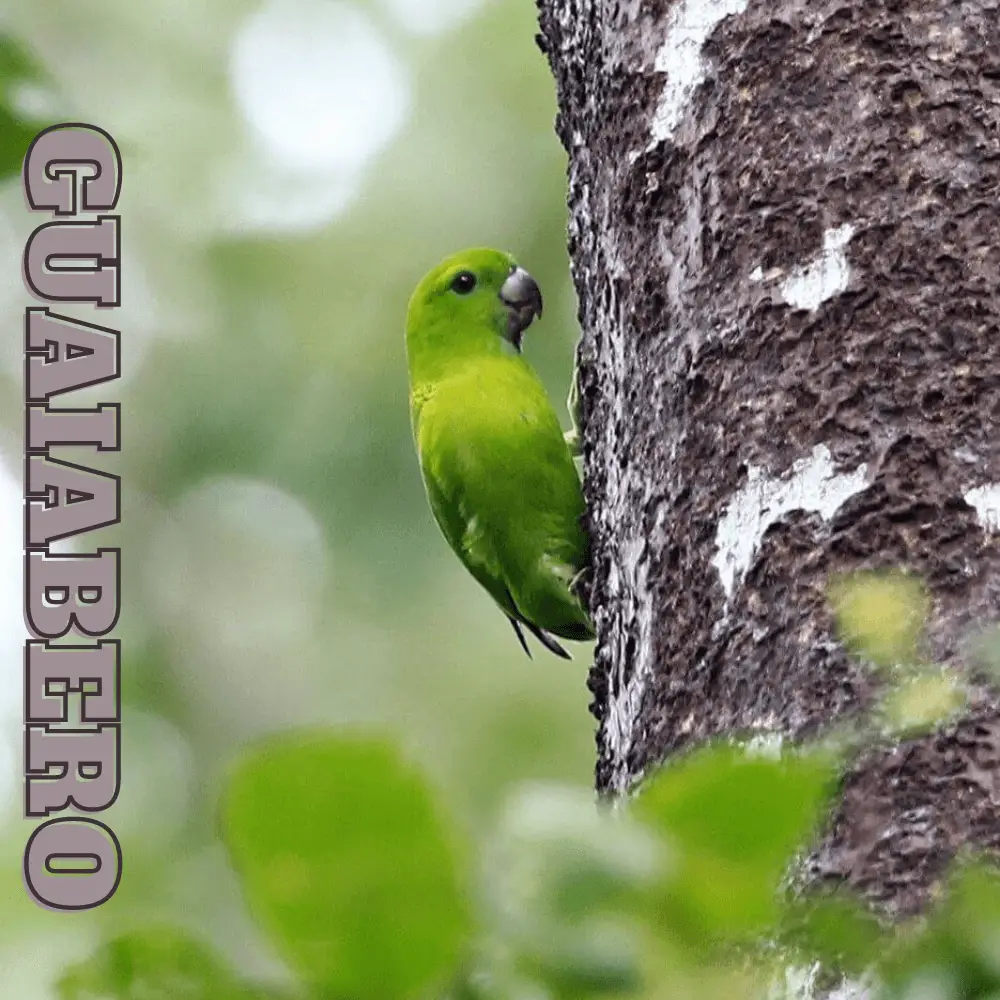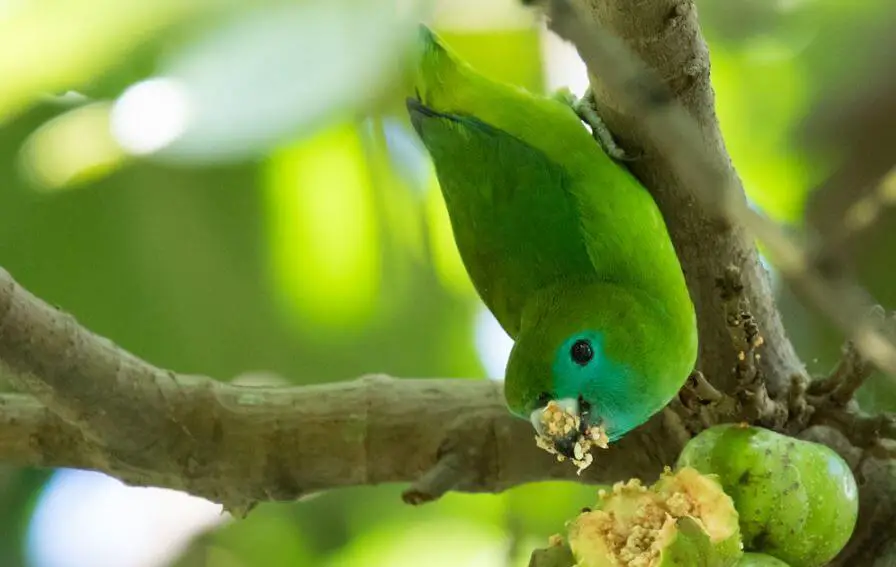
Guaiabero 15 cm; 62–77 g. Green above, yellowish-green below and on the rump and upper tail-coverts; bill bluish-grey; face and throat pale blue; narrow pale blue-collar; bend of wing blue; pale yellow band across undersides of secondaries.
Guaiabero Female has pale blue only on the throat, lores and cheeks; has yellow collar and yellowish rump, both with small but noticeable black crescent markings.
Immature like a female, bill paler. Races differ mainly in the general tone of coloration, and in the tone and extent of blue on the head and narrow collar.
Editor’s Note: This article requires further editing work to merge existing content into the appropriate Subspecies sections. Please bear with us while this update takes place.
Four subspecies were recognized.
Subspecies
Bolbopsittacus lunulatus lunulatus Scientific name definitions
Distribution
Bolbopsittacus lunulatus callainipictus Scientific name definitions
Distribution
Bolbopsittacus lunulatus intermedius Scientific name definitions
Distribution
Bolbopsittacus lunulatus mundaneness Scientific name definitions
Distribution
Editor’s Note: Additional distribution information for this taxon can be found in the ‘Subspecies’ article above. In the future, we will develop a range-wide distribution article.
Habitat
Forest and forest edge, secondary growth, clearings with scattered trees, orchards, and mangroves.
Diet and Foraging

Guaiabero seeds and fruit, fruits of vines and cultivated trees including guava, from which its name derives; forages along with vines and limbs of trees. Generally found feeding below 1000 m.
Sounds and Vocal Behavior
Guaiabero Calls include high-pitched short thin whistles, given either singly or in short series, such as “tsee” or “tse-tsee-tseet”. In the latter case, sounds like a short song strophe of a passerine.
Breeding
Starting to reach a breeding condition in Mar.
Conservation Status

Not globally threatened. CITES II. Usually considered fairly common throughout a fairly limited range; regularly recorded at Angat Watershed Forest, in the area of a reservoir to serve Manila.





















